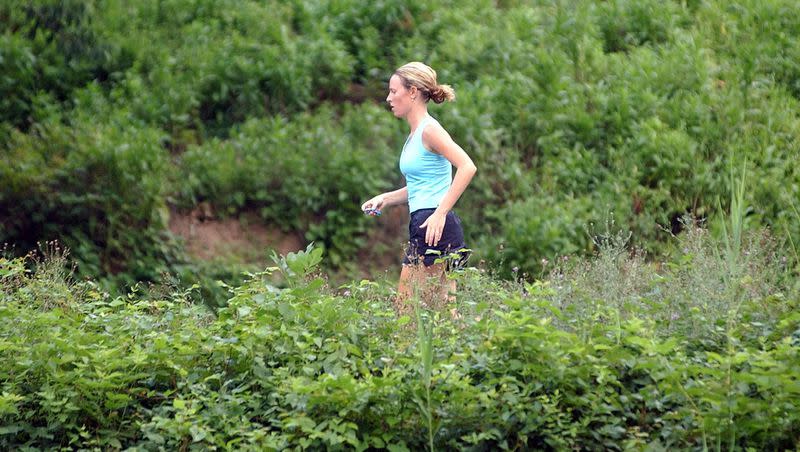Experts say climate change will worsen seasonal allergies: These cities are expected to be hit hardest in 2023

Around 26% of U.S. adults experience seasonal allergies, also known as hay fever, the Asthma and Allergy Foundation of America reported. While currently it might feel like much of the country is stuck in a perpetual winter, when allergy season finally hits, it’s expected to hit hard.
Based on pollen scores and other data, these are the worst — and best — cities for people with seasonal allergies, according to the AAFA. Luckily for allergy-afflicted Utahns, three Utah cities make the ranking for the best cities in the country for people with seasonal allergies.
Methodology: To compile these rankings, the foundation analyzed the 100 most populated U.S. metropolitan areas in the contiguous United States. The five major factors that influenced their rankings are pollen scores for trees, grass, and weed pollen, over-the-counter medication use, and the number of allergy specialists.
Related
Seasonal allergies are starting earlier than normal this year
The snowiest winter in decades continues, with more storms on the way
Climate change could be causing flesh-eating bacteria to spread in warming oceans
Allergies and climate change: According to several climate researchers and previous Deseret News reporting, climate experts claim that human-caused climate change is resulting in longer, more intense allergy seasons.
According to the Deseret News, Climate Central reported the growing season in the U.S. has been steadily growing since 1970, meaning that the period of time plants produce pollen is longer, making for prolonged periods of time for allergy symptoms to flourish.
Based on findings from a study at the University of Utah, the U.S. Department of Agriculture says that warmer weather results in more pollen production, which will also cause allergies to feel more vigorous.
“A number of smaller-scale studies — usually in greenhouse settings on small plants — had indicated strong links between temperature and pollen,” said William Anderegg from the University of Utah’s biology department, per the USDA. “This study reveals that connection at continental scales and explicitly links pollen trends to human-caused climate change.”
How to cope with allergies: Unfortunately, there is no cure for seasonal allergies, but there are ways you can keep symptoms at bay.
It is commonly known that there are several over-the-counter medications meant to treat allergies, or individuals can meet with their doctor to see which drug is right for them. These can include pills, nasal sprays and decongestants.
However, there are ways to help dampen allergy symptoms without medication, according to the Mayo Clinic.
The clinic recommends removing the clothes you’ve worn outdoors upon entering your home in order to avoid pollen transferring to furniture in your house. It is also helpful to take a shower after being outside for a long time to remove any pollen from your hair and skin.
People with allergies should avoid going outside on days when wind speeds and pollen counts are high. There are several apps and pollen trackers available online which can send alerts when allergies are expected to be particularly rough.
Clearing the air in your home is another way to reduce allergy symptoms. The Mayo Clinic says that air conditioning with air filters and using portable air filters in bedrooms can help to treat allergy symptoms.
Worst cities for seasonal allergies in 2023, according to the Asthma and Allergy Foundation of America:
Wichita, Kansas.
Dallas, Texas.
Scranton, Pennsylvania.
Oklahoma City, Oklahoma.
Tulsa, Oklahoma.
Sarasota, Florida.
Cape Coral, Florida.
Orlando, Florida.
Des Moines, Iowa.
Greenville, South Carolina.
Virginia Beach, Virginia.
Houston, Texas.
Little Rock, Arkansas.
Miami, Florida.
Lakeland, Florida.
Raleigh, North Carolina.
Palm Bay, Florida.
Tampa, Florida.
Greensboro, North Carolina.
Rochester, New York.
Best cities for seasonal allergies in 2023:
Buffalo, New York.
Seattle, Washington.
Cleveland, Ohio.
Austin, Texas.
Akron, Ohio.
Washington, D.C.
Detroit, Michigan.
Albuquerque, New Mexico.
Columbus, Ohio.
Salt Lake City, Utah.
Atlanta, Georgia.
Louisville, Kentucky.
Dayton, Ohio.
San Francisco, California.
New York, New York.
Madison, Wisconsin.
San Jose, California.
Indianapolis, Indiana.
Ogden, Utah.
Birmingham, Alabama.
Provo, Utah.

